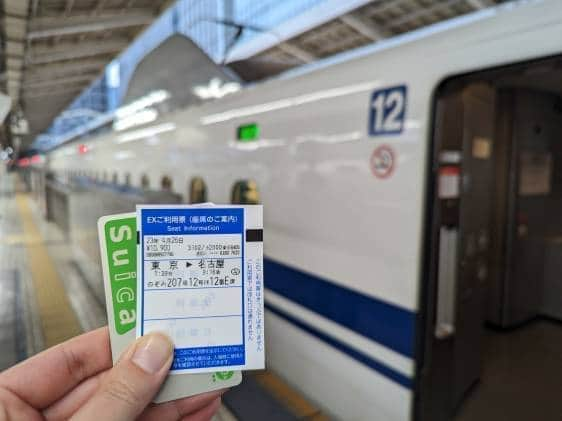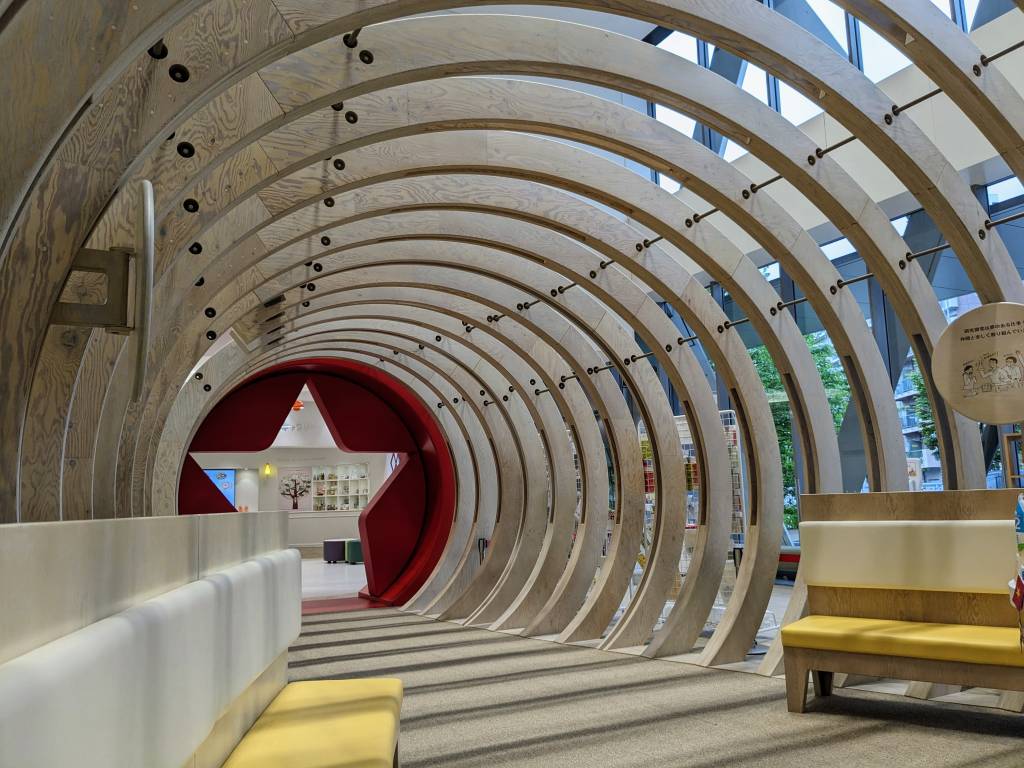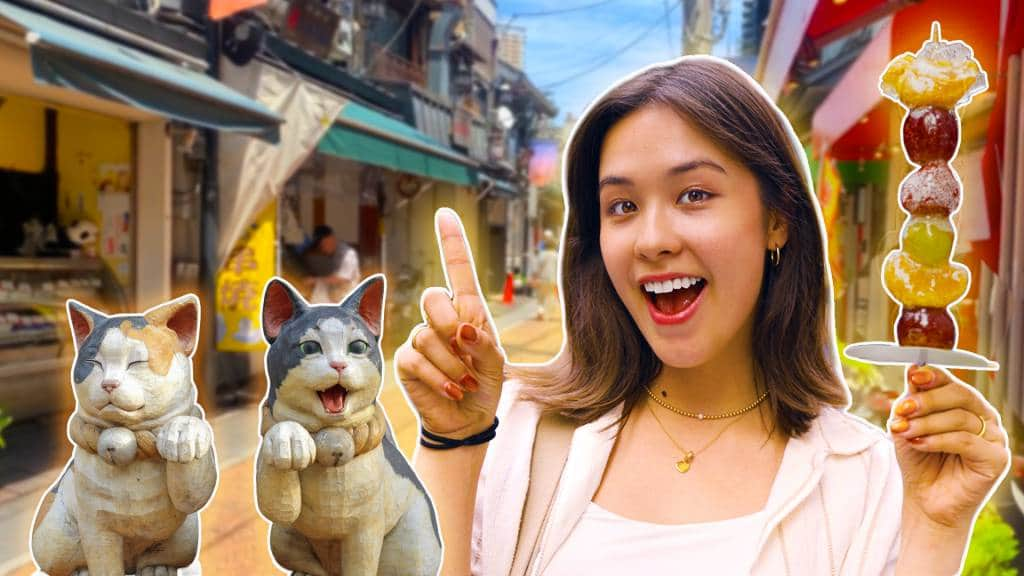With this Tokyo Wide Pass rail itinerary, you’ll visit some of Japan’s most famous sites in just three days.
This is the perfect trip for people who want to see a lot, but have limited time. You’ll check out Mount Fuji, visit an onsen (hot spring) town, and go to one of Japan’s most famous shrines. It will be a busy three days, but trust us, it’s worth it.
What is the Tokyo Wide Pass?
Valid for 3 days¥15,000
Buy online
The Tokyo Wide Pass is a special Japan Rail pass that’s available to all foreign passport holders — including foreign residents of Japan. It’s valid for three days and covers JR trains (plus some private lines) in the greater Kantō region. There are even some Shinkansen routes that are included.
For this itinerary, the Tokyo Wide Pass will cover almost all of your transport costs and net you over ¥10,000 in savings.
Where to buy the Tokyo Wide Pass
The most convenient way to buy the Tokyo Wide Pass is online via Klook, and then pick up your ticket from a machine at JR Ueno Station.
If you don’t want to go to Ueno, you can also buy the pass in person from a JR East Travel Service Center, Midori no Madoguchi Ticket Office, or from a ticket machine.
Where to stay in Tokyo

To maximize your time spent exploring, we recommend staying in Tokyo throughout this itinerary. It means you won’t waste time checking in to/out of hotels, and won’t have to worry about lugging around suitcases — a definite win-win scenario.
A hotel near Shinjuku Station is ideal, because it gives you access to some handy direct train lines. For budget hotels in the area, we like Hotel Rose Garden or Hotel NUTS, meanwhile if you like luxury then go ahead and splash out on the Park Hyatt Tokyo.
If you’d rather stay in a different area, don’t forget to factor extra transfers and travel time into your plans. As long as you stay in an area with access to JR train lines, your extra transport costs will be covered by the Tokyo Wide Pass.
Day 1: Mt. Fuji
¥8,260 covered by the Tokyo Wide Pass // Extra travel expenses ¥2,040 to ¥2,890Depart 8:30 a.m. from Shinjuku Station (JR)
Today you’re off to see Mt. Fuji. You’ll want to be up bright and early to catch the 8:30 a.m. Limited Express Fuji Excursion. This train will get you to the Mt. Fuji area in about 2 hours without the need for transfers, and it’s completely covered by the Tokyo Wide Pass. However, we do recommend making a free seat reservation in advance, because this is a popular route. You can also catch this train at 7:30 a.m. or 9:30 a.m., so the departure time is flexible.
Stop 1: Admire the views at Chūreitō Pagoda
10:30 a.m.
Hop off the Fuji Excursion at Shimoyoshida Station for your first bit of sightseeing: Chūreitō Pagoda. This is probably one of the most well-known views of Mt. Fuji, and for good reason, it’s stunning year-round.
To get to Chūreitō Pagoda, you’ll need to walk about 10 minutes from the train station to Arakurayama Sengen Park. Then you’ll clamber up 400 steps to reach the pagoda itself. Once you’ve snapped all the photos your heart desires, it’s time to head back down the steps. Make sure to pop into Arakura Sengen Shrine on your way out of the park.
When you’re back at the station, hop aboard the next train for Kawaguchiko Station. This train is also fully covered by the Tokyo Wide Pass.
Stop 2: Enjoy a lunch of traditional hōtō noodles
12:00 p.m.
After you arrive at Kawaguchiko Station, it’s time for lunch. And since you’re in the area, you should try the local speciality — hōtō. This is a stew-like dish with large flat noodles that are similar to udon, served with vegetables in a miso broth. This hearty fare is delicious and filling, so you’ll be well nourished for the rest of a very busy day. We recommend the restaurant Hōtō Fudō Kawaguchiko Station, which is known for its high quality noodles. Otherwise, there are lots of other options around that station that have both hōtō and other lighter meals.
Stop 3: Ride the Mt. Fuji Panoramic Ropeway for more views, plus optional boat ride
1:00 p.m.Buy your ticket for the Mt. Fuji Panoramic Ropeway via Klook
Your first stop after lunch is the Mt. Fuji Panoramic Ropeway. To get to the Mt. Fuji Panoramic Ropeway, you can either walk for about 15 minutes or take the Red Line Kawaguchiko Sightseeing Bus to Stop 9 for an extra ¥150.
The ropeway will take you up to the peak of Mt. Tenjō in just 3 minutes. From here you can enjoy views of Mt. Fuji once again, with the added bonus of views over Lake Kawaguchiko too. There are a few photo spots to choose from, and even games too. The ropeway costs ¥900 round-trip.
Now it’s time to head off to your last two destinations for the day: the Kawaguchiko Natural Living Center, and Oishi Park. Hop back on the Red Line Bus for about 15 minutes (¥570) and get off at Stop 20.
Optional Lake Kawaguchiko Sightseeing Boat
If you’d like to enjoy the lake area a little more, you can opt to take a cruise around the lake on a Sightseeing Boat. They depart every 30 minutes from a pier near the bottom station of the ropeway. A boat ride will take 20 minutes. It costs ¥1,000, but if you’re going to do the ropeway and the boat, we recommend getting the set ticket for ¥1,600 that fully covers both.
Stop 4: Relax in nature at the Kawaguchiko Natural Living Center and Oishi Park
2:30 p.m.
The Kawaguchiko Natural Living Center is a great place to get all your Mt. Fuji shopping done. Inside you’ll find plenty of souvenirs and local produce. You can even try your hand at jam-making if you’re so inclined.
Meanwhile, at Oishi Park next door you can enjoy the garden filled with seasonal flowers against the now-familiar backdrop of Mt. Fuji. There are also a few cafés nearby if you’re in need of some afternoon tea.
Once you’re finished shopping and admiring the view, it’s time to hop back on the Redline Bus back to Kawaguchiko Station (¥570) for the train back to Tokyo.
Return to Tokyo
Last Fuji Excursion train departs Kawaguchiko Station departs at 5:36 p.m.There are three Fuji Excursion trains back to Shinjuku Station each day. They depart at 3:03 p.m., 4:51 p.m., and 5:36 p.m. Like the train to get to Kawaguchiko, it’s fully covered by the Tokyo Wide Pass, but we recommend making a free seat reservation ahead of time so you’re not left standing the whole 2 hours back to Tokyo. Once you’re back, it’s time for dinner and good night’s sleep before tomorrow.
For more ideas on things to do near Mt. Fuji, check out our Kawaguchiko day trip guide.
Day 2: Gunma Prefecture (daruma and hot springs)
¥10,480 covered by the Tokyo Wide Pass // Extra travel expenses ¥1,740 to ¥2,100Depart 9 a.m.
After such a busy first day, you’ll be pleased to know that this one is dedicated to rest and relaxation. First, you’ll visit Shorinzan-ji Temple, known as the birthplace of daruma dolls, and then you’ll head off to Ikaho Onsen, a hot-spring town.
Since you’re going to take a Shinkansen, there’s a lot more flexibility in your schedule too. Leave your hotel a little after 9 a.m. to avoid the peak rush-hour trains. Take the JR Chūō Line to Tokyo Station; this part of the journey takes just 15 minutes and is covered by the Tokyo Wide Pass. From Tokyo Station, take either the Jōetsu Shinkansen or Hokuriku Shinkansen to Takasaki Station (50 to 55 minutes). This journey is also fully covered by the Tokyo Wide Pass, and you can make free seat reservations.
Stop 1: See the daruma at Shorinzan-ji Temple
10:30 a.m.
Your first stop for today is Shorinzan Daruma-ji Temple, said to be the place where daruma dolls originated. The temple is a little awkward to get to, but you have a few options.
The most direct option is to take the Gururin Shorinzan Line Bus for about 20 minutes and ¥200. However, this bus has irregular departures, so instead you could take Takasaki-Annaka Line Bus for about 15 minutes (¥380) and then walk 10 minutes. Your final option is to take a JR Shin-Etsu Line train about 5 minutes to Gumma-Yawata Station (covered by the Tokyo Wide Pass) and then walk about 30 minutes to the temple.
Once you’re at the temple, take your time to explore. Everywhere you turn you’ll find daruma of all shapes and sizes, and there is even a small daruma musem to check out. We definitely recommend picking up your own daruma doll from the temple’s shop before you leave — they make great souvenirs. When you’re done, head back to Takasaki Station for lunch.
What’s a daruma doll?
After you’ve been in Japan for a while, you’ll start to see this little oval-shaped figure all over the place. The classic version is mainly red with a serious face painted on it, sometimes with one eye left off. They were originally associated with Buddhism, and are said to bring good luck. More traditional daruma are often sold with blank eyes — you set a goal and color one in, and when you achieve your goal you color the other eye in.
Stop 2: Time for lunch
12:30 p.m.
For lunch today, you have a few options. Gunma Prefecture is known for its sukiyaki, a hotpot-style dish made with beef, tofu, and vegetables, so of course this gets our top recommendation.
You could also opt for katsu-don, a breaded fried pork cutlet served on rice. Katsu-don is usually served with an egg, but Gunma’s version doesn’t use egg. And if you’re not particularly hungry or these aren’t to your taste, there are convenience stores, bakeries, and other dining options around Takasaki Station, so there’s plenty for you to choose from.
Stop 3: Soak your worries away at Ikaho Onsen
1:30 p.m.After lunch, it’s time to head to Ikaho Onsen for some rest and relaxation. Take the JR Jōetsu Line or JR Agatsuma Line from Takasaki Station to Shibukawa Station. The journey takes about 30 minutes and is fully covered by the Tokyo Wide Pass. From Shibukawa Station, you’ll need to take a bus to Ikaho Onsen. This will take another 25 minutes or so, and will cost an extra ¥670 one-way.
Ikaho Onsen is a hot-spring town arranged around an iconic set of stone steps. The water here is known for its reddish-brown color that comes from its high iron content. There are two public hot-spring bathhouses here that accept day-trippers, and several of the local ryokan (Japanese-style inns) do too.
We recommend starting with the two public bathhouses — Ishidan no Yu is near the bottom of the stone steps and accepts guests with tattoos, while Ikaho Rotemburo is at the top of the stone steps and has a lovely outdoor bath.
Pro tip: Save some money and bring your own towels with you. Otherwise, facilities may charge you extra for rental towels.
Return to Tokyo
Catch the bus back to Shibukawa Station by 9 p.m. at the latest.You can easily spend several hours bath-hopping, and we encourage you to. You can get a bus back to Shibukawa Station around 9 p.m. and still make it back to Tokyo before midnight. To get back, you’ll need to pay extra for the bus, but then the train to Takasaki Station and the Shinkinsen to Tokyo Station is covered by the Tokyo Wide Pass. The JR Chuo train from Tokyo Station to Shinjuku Station is also covered.
Need a primer on onsen ettiquette? Check out our how-to-onsen guide for the answers to all your questions.
Day 3: Nikkō
¥8,180 covered by the Tokyo Wide Pass // Extra travel expenses ¥2,870Today is your last day of the Tokyo Wide Pass, and you’re off to visit Nikkō. This is a small town in Tochigi Prefecture that is home to several UNESCO World Heritage sites and some beautiful mountain scenery.
To get there, you’re going to take the Limited Express SPACIA to Tobu-Nikkō Station. There is one departure from Shinjuku Station each day at 9:34 a.m. and you need to reserve your seat in advance. The journey takes about 2 hours and is fully covered by the Tokyo Wide Pass.
If this train is booked out, there are several other ways to get from Tokyo to Nikko, just keep in mind that unlike the JR Pass, the Tokyo Wide Pass covers both JR Lines and Tobu Railway lines so you have a few options.
Stop 1: Take an early lunch break
11:30 a.m.
Your food options today are a little sparse once you leave the main town, so we recommend filling your belly with a nice early lunch as soon as you arrive. Since you’re in Nikkō, yuba (tofu skin) is the obvious choice. You can find it cooked up in all kinds of ways — boiled, stewed, or raw, you name it. We recommend you hit up Shiori, a restaurant along the main street with a friendly atmosphere and English menus.
Stop 2: Take a stroll to (or even along) Shinkyo Bridge
12:30 p.m.
There’s nothing better that a light stroll after a good meal, so that’s what you’re off to do next. Keep walking along the main street, drinking in the scenery and you’ll soon arrive at Shinkyo Bridge. This is a beautiful bridge that spans the Daiya River and marks the entrance to Nikkō’s shrines and temples. It makes for a lovely photo, and if you want to you can spend ¥300 to cross it.
Otherwise, you can cross the river via another nearby bridge for free.
Stop 3: UNESCO World Heritage shrines and temples
1 p.m.
Once you’re across the bridge, it’s time to check out all the different shrines and temples. They’re all clustered together in the same area, so this isn’t hard to do. The most famous of them all is Tōshō-gū Shrine, so we recommend starting there.
Don’t miss the famous wooden carvings of the “See no evil, hear no evil, speak no evil” monkeys on a storehouse near Tōshō-gū’s entrance. Once you’ve finished exploring Tōshō-gū, head over to Rinnōji Temple and Taiyūin Temple.
When you’ve had your fill, head back to the main road to catch the bus to your next destination.
Optional: Visit the Edo Wonderland themepark
Free shuttle bus departs from JR Nikkō Station at 1:30 p.m.Buy your Edo Wonderland tickets online
If you zip through all the morning’s activities and aren’t keen on seeing Kegon Falls, we recommend a visit to Edo Wonderland Nikkō Edomura. This theme park is full of ninja and samurai, many of whom will happily pose for photos with you. You can try your hand at throwing shuriken (ninja throwing stars) or catch an action-packed stage show. Just keep in mind that this place closes at 4 p.m. so if you want to pair it with other sightseeing, you should do this first.
There is a shuttle bus to Edo Wonderland that departs from JR Nikkō Station (just a short walk from Tobu-Nikkō Station). The ride takes just 30 minutes, and is free. However, departures are infrequent, and the only timing that works with your arrival time is at 1:30 p.m. Otherwise, there are alternative ways to get there, but you’ll need to pay extra and make a transfer or two.
Stop 4: Kegon Falls
3:00 p.m.
The next stop is one of Japan’s three most beautiful waterfalls — Kegon Falls. To get there, you’ll take the bus to Chūzenji Onsen (40 minutes, ¥1,150 one way), and then take a short walk to the falls. At Kegon Falls, you can admire the view from either a free observation deck or an even more impressive lower deck that costs ¥570 to access.
You can then head back to Chūzenji Onsen and explore the small town, and take a stroll along the shores of Lake Chūzenji. When you ready, hop back on the bus to Tobu-Nikkō Station (40 minutes, ¥1,150 one way).
Return to Tokyo
Only direct train to Shinjuku Station is at 4:39 p.m.There is only one direct train back to Shinjuku at 4:39 p.m. If you’d rather stick around a little longer, there are a number of other options to get you from Nikko to Tokyo that are covered by the Tokyo Wide Pass, as long as you arrive at a JR Station in Tokyo.
For more ideas on what to do in and around Nikkō, check our Nikkō day-trip guide.
Frequently asked questions
Is the Tokyo Wide Pass worth it?
Yes. You can get great value out of the Tokyo Wide Pass. For example, if you follow this itinerary you’ll save around ¥11,920 on transport costs.
Is the Tokyo Wide Pass better than the JR Pass?
If you are only planning a short trip to Japan, we recommend getting the Tokyo Wide Pass. As you can see from this itinerary, you can still do a lot with the Tokyo Wide Pass, and save money while you’re at it. Meanwhile, the JR Pass wouldn’t be worth it for a trip like this.
Do I need to reserve seats with this itinerary?
Yes, we recommend reserving all your seats for this itinerary ahead of time. If you buy the Tokyo Wide Pass in person, you can do this at the same time. Or you can make reservations online via the JR East website.
Also, don’t forget that some of the trains on this itinerary are reserved seats only, so you’ll definitely need to reserve these, if no others.
While we do our best to ensure it’s correct, information is subject to change.



































